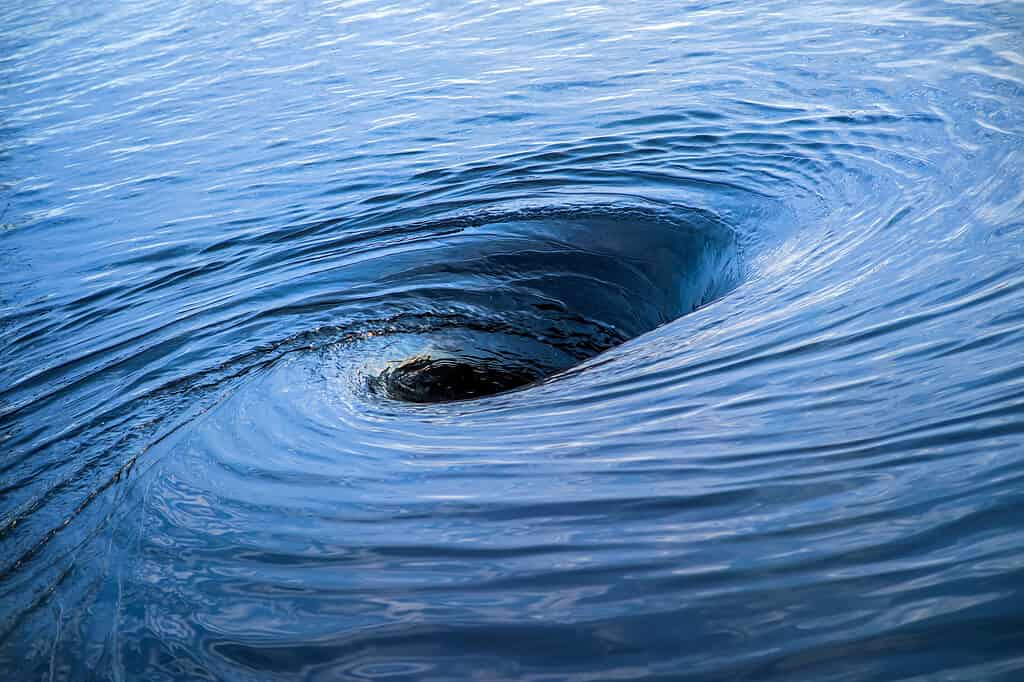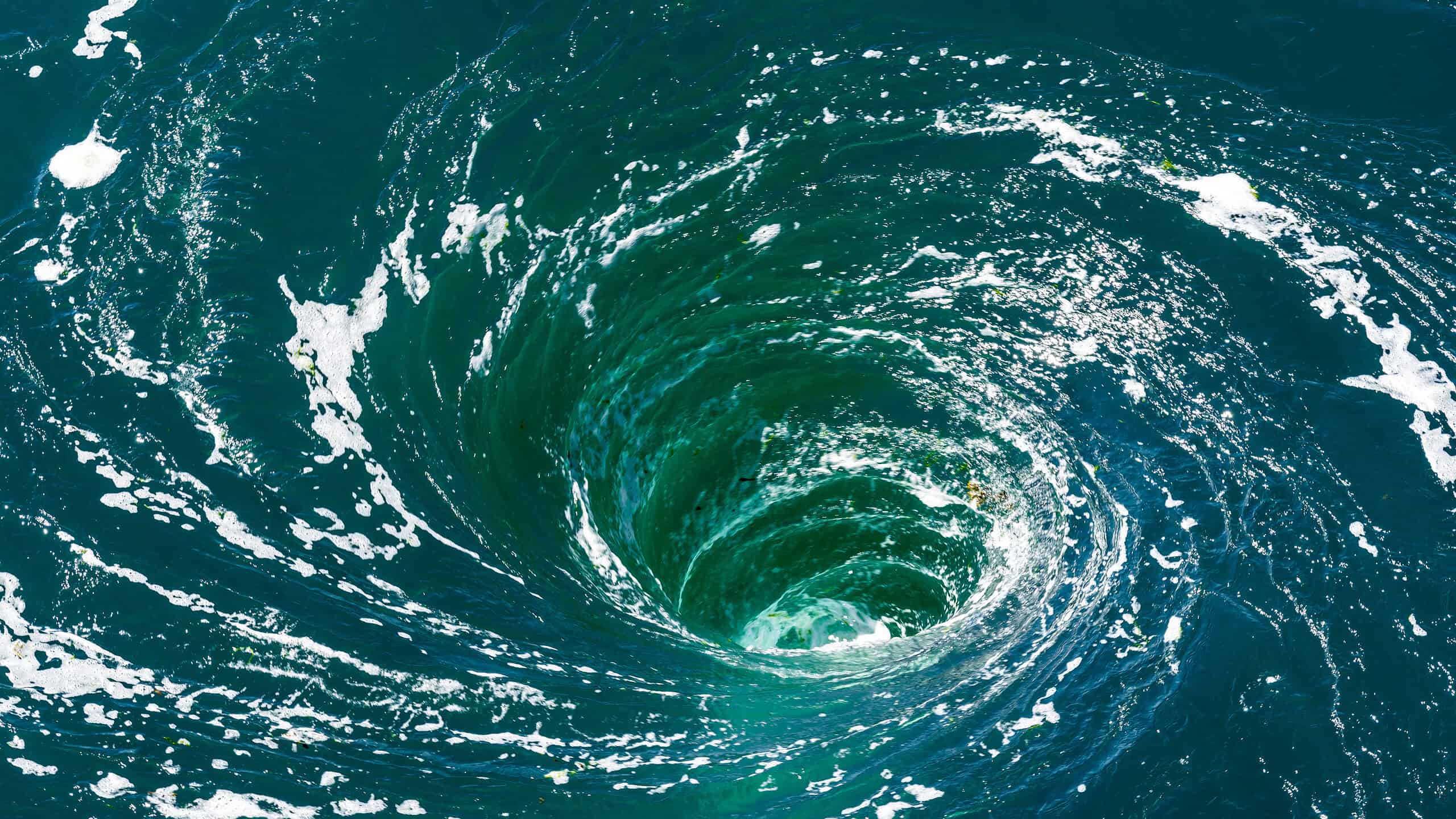Whirlpools are something that sailors have feared for thousands of years. Records of massive whirlpools sucking ships into the ocean’s depths may sound unbelievable, but they do exist! If a whirlpool is large and strong enough, it may have the ability to drag even the largest ships down. Today, we will be learning a little about whirlpools, specifically about the largest known whirlpool that happened in the world. Let’s get started!
What is a Whirlpool?

When the whirlpool is strong enough, it can pull items in the water.
©Leonid Ikan/Shutterstock.com
Before we look at the largest whirlpool in the world, it’s probably a good idea to understand what it is. Essentially, a whirlpool is like a hurricane or a tornado that exists under the water in large oceanic bodies. They are formed when two opposite currents meet each other and start to swirl, creating a body of rotating water. Due to the physics of the event, the swirling water acts as a vortex that can pull things downward.
It’s pretty easy to see small whirlpools in our everyday life. One of the most common ways to see them is by pulling a drain plug in the sink or bath. The water heading downward starts to swirl, eventually causing a small tornado as the water is pulled through the drain. In a bath, placing a rubber duck on top of the whirlpool would show how this phenomenon occurs. When the whirlpool is strong enough, it can pull items in the water.
In the ocean, the largest and strongest whirlpools are known as maelstroms. Ships or boats caught in a maelstrom can lose the ability to steer due to the swirling water. In the strongest of maelstroms, a boat even has the potential to be sucked into the water if the strength of the whirlpool can overcome the ship’s buoyancy.
The Largest Whirlpool in the World
When talking about the largest whirlpool in the world, it’s probably important to mention that occasionally temporary whirlpools occur in various places in the ocean. These are caused by weather, temperature, or a combination of the two. Today, we aren’t talking about these temporary whirlpools since they are extremely hard to track and record with reliability.
The largest whirlpool in the world is the Saltstraumen whirlpool in Knaplundsøya, Norway. This whirlpool isn’t necessarily circular but a tidal current that is so large and strong that it forms whirlpools within the current itself! This natural whirlpool can be seen about 6.2 miles southeast of the city of Bodø. The current dispenses around 400 million cubic meters of seawater through the strait every six hours, forming multiple whirlpools up to 33 feet across and 16 feet long. The fastest the current has ever been recorded was around 25 miles per hour.
The reason that the strait here is so strong is because of an elevation change. The strait has existed for around 3,000 years but was changed after a glacial rebound that ultimately filled the strait with seawater. The difference in height between the sea and the fjord can be up to 3.3 feet, and when the tide swells, a huge amount of water pours over the elevation change, causing extremely strong currents and, ultimately, the whirlpools.
The name of the whirlpool, Saltstraumen, also signals to others the strong currents in the strait. The first part of the word, Salten, is the district where it’s located, and the second part of the word is the definite form of the word straum, which means “water flow” in Norwegian. Together, it makes a lot of sense!

The Fish of Saltstraumen

The resulting region has ultimately become one of the fishing hotspots of the region.
©Ufulum/Shutterstock.com
Due to the extreme currents in the strait, fish will often be funneled through and occasionally trapped nearby. The resulting region has ultimately become one of the fishing hotspots of the region. The most common fish found in the strait are saithe, cod, wolffish, rose fish, halibut, and coalfish. In fact, the largest coalfish ever caught was caught in the strait and weighed 50 lbs.
Due to the extremely high numbers of fish and coastal location, the strait is also home to one of the oldest known hunter settlements in the area and one of the oldest archaeological digs in Norway. The settlement existed 10,000 years ago, where hunters lived on the ice and fished the nearby currents. Even though times have changed a lot, it seems that the region has been a secret fishing hole for, quite literally, all of human history!
Thank you for reading! Have some feedback for us? Contact the AZ Animals editorial team.








